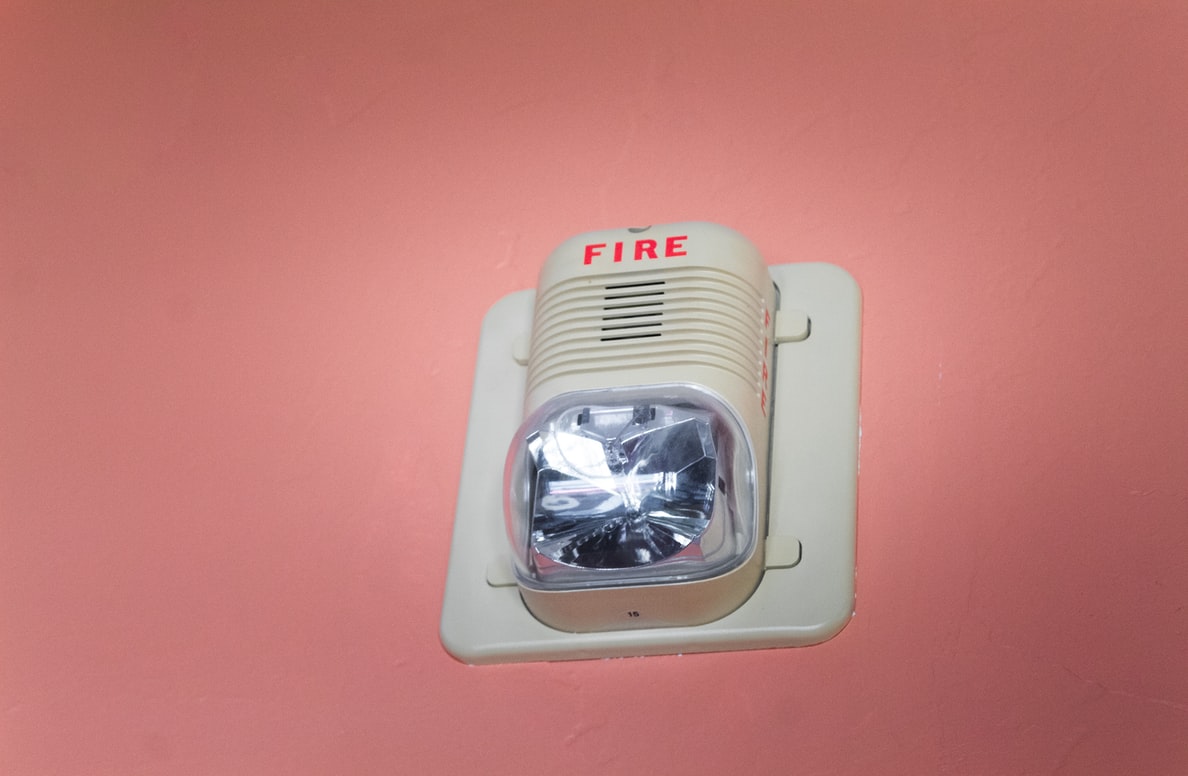What Are Low Voltage Systems
Electrical Systems Operating at Low Voltage
While this article does focus on the technical side of things to some extent, it also discusses the bigger picture. Our design approach prioritizes taking a forward-looking and intelligent advantage of emerging technologies that have already been proven effective. What we are doing “under the hood” is enhancing our work by improving our economies and performance. It involves weaving together the technical and the artistic, as well as the poetic and the practical, and bringing dreams closer to their corresponding realities.
Therefore, we are interested in anything that might seem unremarkable or go against the grain of an industry in terms of finding ways to do things more intelligently. The topic we are discussing here is a perfect illustration of this. It is difficult not to notice that most of the electrical devices we are surrounded by at home or work run on electricity that is DC (direct current) and has a low voltage.

The Uses of Low Voltage Systems
The construction industry continues to “default” to wiring virtually everything in buildings to high voltage AC (Alternating Current) electricity. It is even though this method is less safe, less efficient, and ultimately more expensive for a number of reasons that we will cover in the following paragraphs. Why is this the case? Inertia, as well as resistance to change and innovation, is what we believe to be the primary cause.
The use of low voltage power provides an alternative that, in comparison to conventional high voltage systems, may be more productive and less expensive. A ‘Class 2’ power source is required for low voltage systems. It’s because these systems operate on voltages that are lower than 30 volts DC (typically 12, 24, or 48 volts). It makes the product’s installation, maintenance, and use much less dangerous. As a direct consequence of this, the electrical safety code requirements for these systems are significantly less stringent.
Electrical systems with high voltage and alternating current work really well for things like transmission lines. Without it, the operation of our power grid would be impossible. In addition, there are a variety of electrical appliances, such as pumps, that cannot function without high voltage. However, the vast majority of electrical devices found in our homes and places of business are either capable of operating on DC power or actually do so already. Think about boats, ships, airplanes, recreational vehicles, and other types of cars that run primarily on DC systems for everything electrical.
These systems are used in various other applications.
There is really no reason why we cannot implement these systems in our buildings as well. There are also a lot of compelling arguments in favor of giving it some serious thought. Everything about this possibility increases efficiency, significantly decreases costs, and greatly improves safety. It’s crucial to remember if we are working with renewable energy sources (such as solar, hydro, or wind) located on-site. That’s because, contrary to the power from the utility grid, such type of power is almost always low voltage DC power. It is much more efficient to use the electricity in this form rather than to go through the costly process of boosting the power to a higher voltage using an expensive inverter, only to have to convert it back to DC at most points of use. Using electricity in this form can save a lot of time and money.
In most cases, some combination of high and low voltage electrical systems is already in the process of being installed. And for the vast majority of projects, this will continue to be the case. However, there is a significantly increasing possibility that the equilibrium will shift to be substantially more heavily weighted in favor of low voltage systems. When it comes to lighting, this adage could not be more accurate.
Low Voltage Lighting
Lighting systems typically account for one of the greatest draws on a building’s electrical supply. LED technology has reached a point where its quality, reliability, and cost have all improved to the point that it is now the default option for almost all lighting in our projects. Low voltage power is used to illuminate all LED lights.
The majority of the cost associated with LED light fixtures is due to the fact that each fixture contains an integral transformer in preparation for being wired to a high-voltage electrical system. The purpose of a transformer is to convert the power from high voltage to low voltage. Installing a single remote transformer that can serve as the power source for multiple lights is an alternative method to the one described here. One option that can reduce initial costs, ongoing costs, and future maintenance is to use fewer transformers. It can save money on all three fronts.
Uses of Low Voltage LED Lights
 Since their invention in the 1950s, low voltage lighting systems have primarily been used to illuminate outdoor spaces, as well as in some recessed and cabinetry lighting applications. Because of the functionality and cost of LED lighting, it’s now a viable option for significantly greater variety of lighting applications.
Since their invention in the 1950s, low voltage lighting systems have primarily been used to illuminate outdoor spaces, as well as in some recessed and cabinetry lighting applications. Because of the functionality and cost of LED lighting, it’s now a viable option for significantly greater variety of lighting applications.
LED lamp fixtures have lower wattage, resulting in improved performance while using only a tiny fraction of the energy required by other types of lighting. They also operate at a much lower temperature compared to other types of lamps. There is a lower possibility of the lamp itself catching fire, as well as a lower chance of the fixture igniting objects that are in close proximity to it.
LED dimmers can further reduce the amount of power that is consumed while also providing ambiance lighting. The dimmers must be compatible with the particular LED light. LED lighting also produces a variable amount of color output. Additionally, LED lighting is long-lasting, with a service life that can be measured in decades.
Accent lighting frequently makes use of track lighting as well as cove lighting. Both cove lighting and track lighting can provide a space with soft light. But, only the latter can provide general lighting to a specific area. You can also use track lighting to highlight artwork in a home or gallery. A number of rooms, including kitchens, bathrooms, bedrooms, and hallways, can all gain from the installation of lighting with a lower voltage requirement.
Benefits of Low Voltage Lighting Systems
LEDs powered by low voltage allow for more creative placement of lighting. This is because they can draw their power from a distance and from multiple sources. Traditional lighting systems do not permit the installation of track or cove lighting in specific areas. However, these types of lighting can now be used in those areas. Lighting fixtures that include the power source require ceiling or wall space to house the fixture. Whereas, a remote power source only requires that wires run through the area. This difference is essential to keep in mind for projects that have space limitations. Because of this increased flexibility, we are able to reevaluate many different lighting scenarios completely.
Tips on Installation
LED lights, in comparison to other types of lighting, typically generate a significantly lower amount of heat. This is yet another advantage of these lights. It reduces the need for cooling, which results in energy savings. Any light fixture that is going to be installed in a location where it will be adjacent to insulation needs to have a rating that allows explicitly for that.
When an LED light’s driver is integrated into the fixture, a thermostat will turn off the light if it reaches a predetermined temperature. However, when a remote driver is utilized, not only is the installation process simplified. There are also no concerns regarding the proximity of the driver to insulation. Last but not least, it is much simpler to keep an airtight construction with the simplified installation requirements of light fixtures with remote drivers and low voltage wiring. It is not to say that this is the least important benefit, however.
Low Voltage Wiring
Class 2 wiring, however, does not require the installation of a licensed electrician, compared to high voltage Class 1 wiring. If the system and wire types allow for it, high voltage power can be brought to a central driver location (ideally, within fifty feet of wire length from the lighting), and then all wiring downstream of the drivers can be Class 2.
Wiring classified as Class 2 does not need to be grounded. Nor does it need to be contained within a conduit or junction box. Class 2 wiring is accessible to any competent installer who wants to work with it. This flexibility can be helpful with respect to both timetables and costs associated with electrical installation. Working with low voltage power is much safer than working with higher voltage power. It’s due to the drastically reduced risk of receiving a shock and the decreased need for conduit and junction boxes. Maintenance can be performed by skilled installers instead of licensed electricians. Meanwhile, the best option for traditional lighting systems is to hire a trained electrician.
Low Voltage Power Systems
Low voltage power systems are more straightforward, more effective, and cause less disruption to people living in a building when they are serviced than traditional electrical systems. You can consolidate the remote drivers into central locations. Here you can relocate them to more convenient locations for accessing and maintaining them. Because there are fewer of them, maintenance is generally more straightforward. Also, they can be located in areas that can make the scheduling of maintenance easier as well. For instance, maintenance work is viable in hotels or hospitals without disturbing the occupants of those facilities in any way.
As a result of the low amount of power that LEDs consume, the backup batteries that are used in lighting systems can either produce light for a longer period of time compared to more conventional systems or provide more light from a smaller battery. The use of emergency backup drivers can be beneficial for low-voltage power systems that utilize LED lighting. Suppose low-voltage LEDs provide the general lighting on a property. In that case, the fixtures can quickly and easily be connected to a battery-powered backup driver that has the capacity to supply adequate power for multiple homes.
Emergency Lightings
 This is also the case with emergency lighting, which the Life Safety Code requires, the National Electric Code, and the International Building Code to illuminate the path of egress in commercial and public spaces. The International Building Code also requires that emergency lighting be installed. These institutions determine the minimum level of illumination that is necessary for crisis situations. LED fixtures are advantageous for use in the provision of emergency lighting due to their low wattage and long lifespan. They can operate using alternative power sources, such as an integral auxiliary battery pack or a remote-mounted unit inverter.
This is also the case with emergency lighting, which the Life Safety Code requires, the National Electric Code, and the International Building Code to illuminate the path of egress in commercial and public spaces. The International Building Code also requires that emergency lighting be installed. These institutions determine the minimum level of illumination that is necessary for crisis situations. LED fixtures are advantageous for use in the provision of emergency lighting due to their low wattage and long lifespan. They can operate using alternative power sources, such as an integral auxiliary battery pack or a remote-mounted unit inverter.
Instead of being mounted on the wall, battery packs make excellent backup drivers. It is because they can be moved around easily and positioned wherever additional illumination is required. During a power outage, you can remotely install unit inverter equipment in locations such as utility rooms, where it will then continue to supply LED drivers with AC power. The power is transferred from the inverter’s battery supply through a separate circuit that is specifically designed for that purpose.
Battery Packs for Emergency Lights
Low-voltage systems that rely on LEDs for general lighting can rely on integral emergency battery packs as their primary power source in the event of an outage. Because these have earned the UL Component Recognized label in both the United States and Canada, they are suitable for use in LED lighting systems. The UL 924 requirements will be met by lighting fixtures that have these battery packs installed. And, those lighting fixtures will receive certification as meeting those requirements.
The typical duration of operation for emergency lighting is approximately ninety minutes. Depending on the system’s configuration, these remote drivers can deliver a constant voltage, constant current, or constant power supply. LED arrays will have a constant voltage regardless of the current if they are powered by constant voltage. Even though it may diminish the light due to the fact that the batteries are drawing energy, they will still illuminate “up to code” for the necessary amount of time.
Battery packs that operate on constant current deliver a constant output of current, regardless of the fluctuations in voltage. The minimum voltage requirement that the LED lighting must meet helps to determine how well these packs will function. As the battery dies, the level of illumination will decrease. The constant power battery packs are considered to be superior to the other two types. That’s because the constant power ensures that the illumination level will remain steady throughout the entirety of the ninety-minute emergency duration. It makes the constant power battery packs the clear winner in terms of which type should be purchased.

